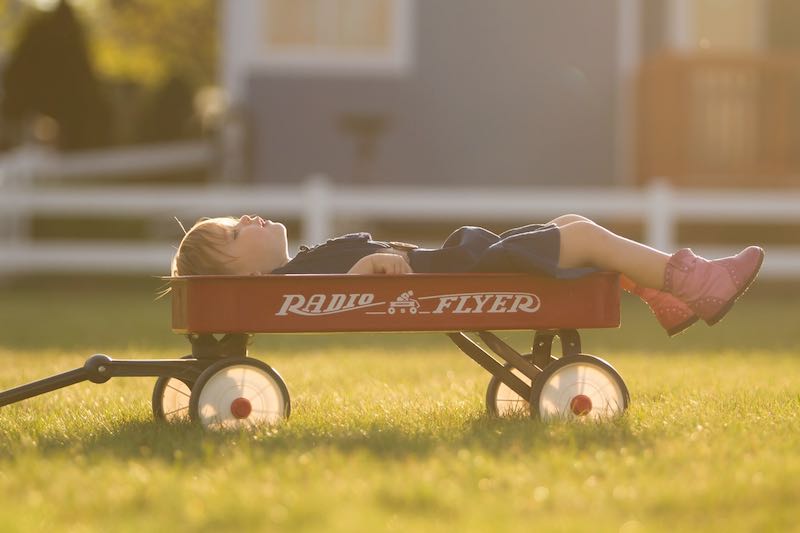9 Lifestyle Tips for People With Autism

Like many people, some adults and children with autism might find it difficult to adopt a healthy lifestyle and maintain it.
And you likely already know that for a person with autism, staying healthy is important in being able to better manage the challenges they might face.
Maybe they struggle with paying attention, hindering them from doing certain physical fitness activities.
They might have food sensitivities, digestive issues, or uncommunicated preferences that keep them from eating healthily. They can also have elevated energy levels that make it difficult for them to wind down and sleep.
These are just some of the problems experienced by individuals on the spectrum as well as their parents, family, and caregivers. But it’s not impossible to ease through their daily habits. To help out, we’ve outlined some simple lifestyle tips to help people with ASD improve their overall health.
9 Fitness, Nutrition, and Sleep Tips for People With Autism
Fitness Tips
Staying fit leads to improved behavioral, emotional, mental, and physical health. For individuals with ASD, it helps moderate energy levels. aggression and hyperactivity. It also allows them to engage better, achieve a healthy weight, and have better overall well-being. Consider these activities with your children, family, or patients.
1. Do sensory exercises.
Having a consistent fitness program that’s exciting, fun, and sensory-engaging can help improve the individuals’ body awareness, coordination, endurance, and strength. It may also help a person’s mood and attention.
Start off with simple activities like hiking, walking, jogging, or swimming. For a little more advanced exercises, consider doing full-body exercises such as arm circles, bear crawls, medicine ball slams, star jumps, and working with punching bags. Exercise doesn’t have to feel like work. It can include fun games like playing tag outside, chasing bubbles, or going on a scavenger hunt.
Keep in mind that individuals on the spectrum can do regular activities. They just need to be taught through broken-down, easy-to-learn points, using verbal and visual cues, to help them get through the movements. More importantly, remain calm, supportive, and be sure to use positive words and encouragement.

2. Get involved in self-awareness and social activities.
Individuals with ASD experience difficulties expressing themselves and engaging with others. That’s why it’s essential for them to be exposed to activities that will improve their awareness of themselves, the people around them, and their environment.
Teach them to do mirror exercises with you (or a trusted partner) where they mimic your movements. Start with simple movements like shoulder rotations, then progress to complex ones like arm raises or knee bends. You can do these movements during games like “Simon says” or by watching someone move to one of their favorite songs. Karate classes are also a good way to learn by watching movements and also relating to others in a group.
Expose them to team sports like basketball, soccer, or baseball. For instance, teach them how to run from one end of the court to another with the basketball hoops as visual cues. You can even add arrows to guide them to run toward the right direction. Also, incorporate positive reinforcement and words--whether they’ve made a shot or even just for trying. It’s important to encourage even to attempt at play.
Once you feel that they’re ready, you can consider enrolling them into your community sports groups. This will enable them to apply what they’ve learned from your activities in a new environment. They may also make new friends!

3. Seek professional help.
Children and adults on the spectrum have unique and special needs, and you don’t have to manage this alone. Thus, consulting with a professional can be useful in helping your loved ones improve their fitness.
Before starting an exercise program, be sure to consult with your child’s doctor to ensure that you’ll engage them in the right activities. You may also be taught to monitor for physical impact, like cramps, difficulty in breathing, or dizziness, and be informed on how you can address these.
Similarly, certified trainers understand the unique needs of individuals with ASD. So, they know best how to work with them personally and even customize a workout with their specific needs in mind.
Nutrition Tips
Individuals with ASD may overeat or be very selective when it comes to food. When left unmanaged, this can lead to more serious health issues. Being overly picky about eating certain foods may cause them to need more of some nutrients than others.
Here are a few nutrition tips you can implement to improve their overall health:
1. Find the nutrition plan that makes sense for the individual.
We’re all unique individuals, and some of us require nutrients in different ways than others. The same can be said with people with ASD. So, be open to crafting a nutrition plan that caters to their needs.
There are indeed special diets surrounding ASD, specifically casein- and gluten-free diets. While it might be in your best interest to try different approaches, this is best done under the guidance of a medical professional. Remember, restrictive diets can lead to deficiencies in certain areas, which certainly will not be healthy in the long run. So, it’s best to consult a registered dietician or nutritionist prior to making drastic changes to your child’s meal plan.
Parents and caregivers should pay attention to nutrients that are essential to the individuals’ general health. Every cell in our body needs protein, so be sure your loved one gets protein-rich foods like chicken, seafood, lentils, and cottage cheese. To make bones stronger, they need to consume more protein, calcium (dairy and green, leafy vegetables), iron (think beef and spinach), and phosphorus (from beans and nuts). Similarly, they need iron to feel energized and grow properly.

If you’re giving your child supplements for added amounts of certain vitamins and minerals, be sure they consume this with a balanced diet. Supplements are not meant to replace healthy nutrition but rather add on to it. And do consult with your doctor first as some supplements may cause adverse effects like digestive problems.
2. Maintain a regular mealtime schedule.
Individuals with ASD experience a lot of stressors during mealtimes – bright lights, movements from others in the environment, or loud sounds. Meals might not feel like the same experience to them as they do to others. Making mealtimes as routine as possible can help them significantly.
One way to do this is to have meals at the same time every day. This will help build anticipation and reduce stress. Try to reduce possible triggers by dimming harshly bright lights and encouraging your family members to speak one at a time. Allow your child to choose a favorite food or seat at the table during mealtimes to help them feel more at ease and like they have a little control over their environment.
Likewise, train them to differentiate what hunger and fullness feel like. Sometimes, when they think they’re hungry, they’re really just thirsty or bored. So, make sure they drink plenty of water throughout the day and encourage them to fill up on healthy goodies before processed junk food. This will help them feel satiated and energized.
3. Understand their eating habits.
Since individuals on the spectrum have challenges expressing themselves, they might be unable to communicate their food sensitivities and preferences like they need to. This can then become a barrier to them consuming a healthy balanced diet.
If your child is selective about certain foods, particularly those that are slippery and soft, try to take things beyond the kitchen. Take them to the supermarket, allow them to choose some foods they like or find interesting, then decide together how to prepare it. While there’s no guarantee that they’ll eat their chosen food right away, becoming more familiar with it will help them become more flexible eaters. Sometimes the first step is just touching food with their fingers to get them used to the idea of eventually eating it.

If your loved one is struggling with changes, try offering two or three food choices to your child to give them a sense of control. You can also show them your (or their siblings’) food preferences, which over time they might take on as their own. You can also demonstrate eating the food as they watch and talking about what it tastes like.
Sleep Tips
People with ASD may have sleeping difficulties such as trouble winding down, increased anxiety during bedtime, social cueing problems, sensory differences, and the like. This then could lead to problematic behaviors like aggression, hyperactivity, and inattentiveness. That’s why managing their sleeping habits with these tips can be beneficial:
1. Establish a sleeping routine.
Individuals with special needs thrive on routines, so it helps to create a short, predictable bedtime practice which should be consistently followed every night.
Limit the use of all electronics an hour or two before bedtime because the bright screen lights can be very stimulating for them. Instead of fun, rough play, like tickling or wrestling, go for quiet activities such as coloring, playing with puzzles, or reading to help them settle down.
Manage their naps within the day and be sure they don’t take them too late in the afternoon. Also, minimize their food and liquid intake a few hours before bedtime as too much of these can interfere with their sleeping. Remember that sodas or other foods like chocolate may have caffeine or add stimulation--which can affect energy and sleep patterns.

2. Make a conducive sleeping environment.
The bedroom plays a big role in the individual’s ability to fall asleep and stay asleep, because they may be more sensitive to particular brightness, sounds, and sensations.
Try to block out lights with curtains or blinds. If they can’t sleep in a completely dark room or they share a room with a sibling, have a dimmed night lamp instead.
They may also be attracted even to minimal sounds, so using thick carpets and shutting doors completely can help. Be sure that people staying in nearby rooms are also aware of their sounds and movements during bedtime.
Turn off gadgets and appliances situated near your child’s bed. Remove distractions like toys or pictures within their line of sight if these are stimulating for them.
If your child enjoys certain smells, consider using subtle scented oils (that they find relaxing) in their room.
Essentially, adapting the bedroom to be as comfortable as possible for your child can help them ease smoothly into their sleeping habits.
3. Use relaxing sensory activities.
Soothing sensory activities can help your child stay calm, especially at night.
Take warm showers to help wind down their energy. Using smooth pressure touch, like rubbing and gentle scratching, when drying them off or applying lotion can be relaxing for them. Gentle rubs, especially on their neck, back, and down the spine, can also be very soothing.
For some, having soft music playing in the background helps put them to sleep. It’s essential to pinpoint what works best for your child – possibly nature sounds or orchestral music. Singing, on the other hand, is typically discouraged as this will entice them to join in.

Final Thoughts
Easing individuals with ASD into healthy daily practices can be challenging – but it’s not impossible. These nine tips we’ve outlined can guide you in finding what fitness, nutrition, and sleeping practices can help your child develop healthier and better-rounded habits.
Do keep in mind that the approach that works for one person might not work for the next. Thus, it’s important to consult with a professional – a doctor, fitness instructor, nutritionist – before making decisions on your loved one’s daily routine. Not only can they guide you on what to do, but they can also prepare you on how to address concerns along the way. Be open to trying new things. Patience is key.
Likewise, connect with support groups so you can learn from their own experiences. Be sure to also stay up-to-date by regularly reading ASD resources. Autism Speaks and NAA have a lot of helpful information that you can review anytime.
Finally, Behavior University can help parents and caregivers work with adults and children with ASD. We have RBT training, mini courses, and continuing education to assist you in supporting individuals with special needs. Learn more today at our website.